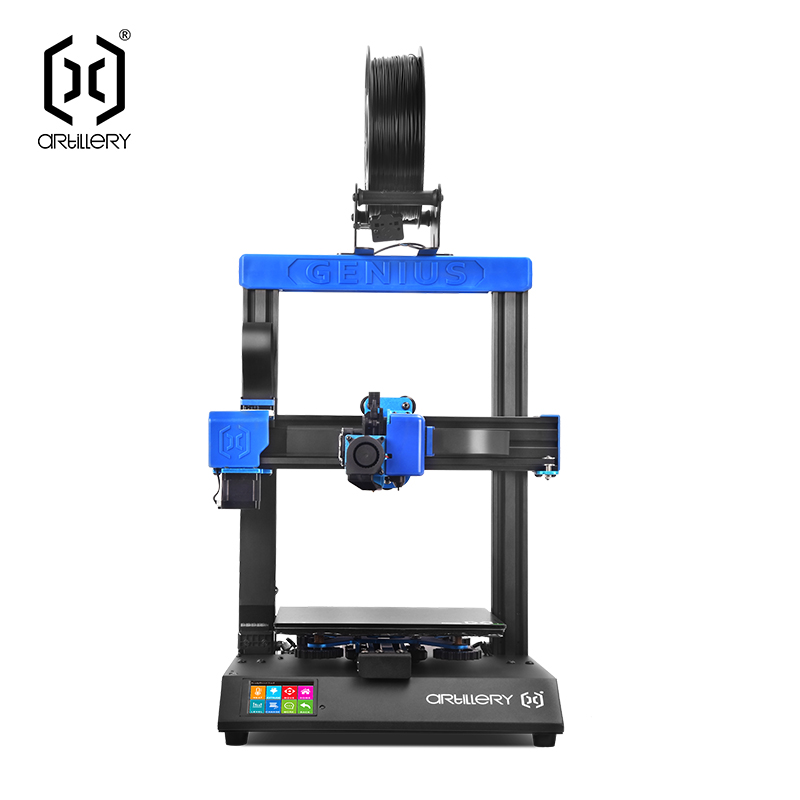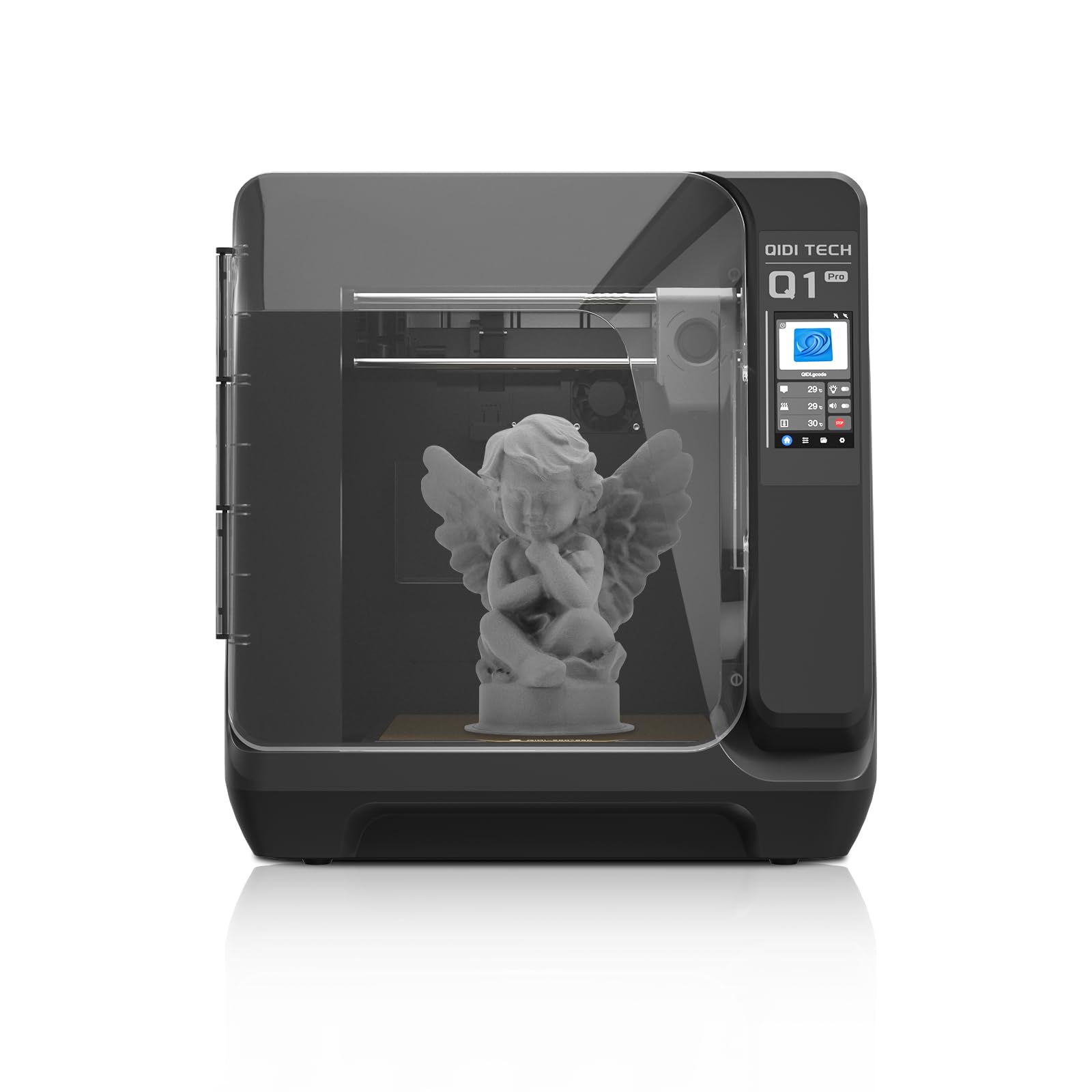Compare Genius Pro vs Q1 PRO
Comparison between the best 3D printers
Choose the best 3D printer at the best price. The cheapest 3D printers are here.
Buy a 3D printer here with 3D Fila.
 |
 |
|
| Model | Genius Pro[BUY Genius Pro] |
Q1 PRO[BUY Q1 PRO] |
| Printing Material | Filament | Filament |
| Buy Filament for Artillery Genius Pro | Buy Filament forQIDI Q1 PRO | |
| Estimated price | $309,00 | $449,00 |
| Manufacturer | Artillery | QIDI |
| Release Year | 2022 | 2024 |
| Print Volume [mm] | 220x220x250 | 245x245x245 |
| Printer Size [mm] | 430x390x590 | 467x477x489 |
| Weight [kg] | 9,6 | 20 |
| Power Loss Recovery | YES | YES |
| Enclosed printer | NO | YES |
| Bed Leveling | Automatic | Automatic |
| Filament End Sensor | YES | YES |
| Bed type | Heated | Heated |
| Power supply system | Direct Drive | Direct Drive |
| Standard nozzle | 0,4 | 0,4 |
| Maximum Nozzle Temperature [°C] | 240 | 350 |
| Maximum Bed Temperature [°C] | 120 | 120 |
| Maximum printing speed [mm/s] | 150 | 600 |
| Filament holder | YES | YES |
| Camera for supervision | NO | NO |
| Recommended filaments | PLA, PETG, Tritan, Flex, ABS | PLA、ABS、ASA、PETG、TPU、PC、PA、PA-CF、PET-CF、PAHT-CF etc. |
| Recommended slicers | Cura, Simplify, Slic3r, IdeaMaker | QIDI Slicer/Cura/Simplify 3D/ORCA/PRUSA Slicer |
| Maximum Resolution [mm] | 0,1 | 0,1 |
| Processor | Ruby 32bit | Cortex-A53,64-bit Processor |
| Display | Touchscreen TFT 3,5'' | Touchscreen 4,3'' |
| Power Supply | 350 W | |
| Connectivity | SD / USB | WiFi/USB Flash Drive/Ethernet Cable |
| Operating systems | Windows, Mac, Linux | Windows, Linux, Macbook |
| Date of registration in the system | 2022-11-07 | 2024-07-09 |
| Release date | 2022 | 2024 |
| Extra features | The Artillery Genius Pro is a standout 3D printer with a fast-heating AC tempered glass print bed and a sleek design with a black aluminum base and blue accents. It features a Titan-style direct extruder and a 32-bit Ruby mainboard. Despite its advanced feature set, it struggles to maintain print quality, requiring frequent adjustments and calibrations, and its glued glass bed makes cleaning and replacement difficult. | The QIDI Q1 Pro 3D printer stands out for its Core XY structure and heating chambers that reach up to 60ºC, ideal for advanced materials such as ABS and Nylon. It features Klipper firmware, an automatic leveling system, a high-flow extruder with a double metal nozzle and a hotend that reaches 350ºC. It offers connectivity via Wi-Fi, USB and Ethernet, as well as a 1080p camera for remote monitoring and an intuitive touchscreen for easy operation. |
| Support for multiple colors and materials (AMS and CFS) | NO | NO |
Notes * |
||
| Cost-benefit | 7 / 10 | 8 / 10 |
| Hardware | 2.4 / 10 | 4.8 / 10 |
| Tela | . | . |
| Print volume | 3 / 10 | 3 / 10 |
| Performance | 1 / 10 | 5 / 10 |
| [BUY Genius Pro] | [BUY Q1 PRO] |
Conclusion |
| In comparing the Artillery Genius Pro and the QIDI Q1 Pro, it is evident that both 3D printers offer unique advantages tailored to different user needs and preferences. The Genius Pro is more affordable and features a user-friendly design and automatic bed leveling, making it accessible for beginners. However, it has limitations with print quality maintenance and material compatibility, which may require users to invest extra time and effort in calibrating and adjusting the printer. On the other hand, the QIDI Q1 Pro, while priced higher, provides superior print performance and versatility. Its advanced capabilities, such as a higher maximum nozzle temperature, Core XY structure, and multiple connectivity options, make it suitable for more experienced users looking to work with a wider range of materials, including those that require controlled environments. The additional features, such as the heating chamber and intuitive controls, contribute significantly to its overall value and effectiveness in producing high-quality prints. In summary, for users prioritizing budget and simplicity, the Genius Pro is a commendable choice despite its drawbacks. However, for those seeking enhanced performance and capability to handle advanced materials, the QIDI Q1 Pro justifies its higher price with its superior features and reliability. Ultimately, the best choice will depend on the specific needs and printing ambitions of the user. |

